Immigration
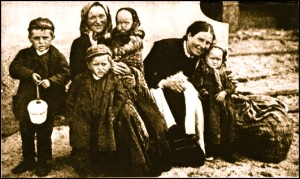
Interesting Facts About The History of Immigration
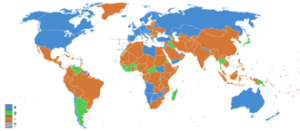 Net migration rates for 2011: positive (blue), negative (orange), stable (green), and no data (gray)
Net migration rates for 2011: positive (blue), negative (orange), stable (green), and no data (gray)
Immigration is the movement of people into another country or region to which they are not native in order to settle there, especially permanently. Immigration is a result of a number of factors, including economic prosperity, political reasons, family re-unification, escaping conflict or natural disaster, or simply the wish to change one’s surroundings.
Statistics
 The largest Vietnamese market in Prague, also known as “Little Hanoi.” In 2009, there were about 70,000 Vietnamese in the Czech Republic.
The largest Vietnamese market in Prague, also known as “Little Hanoi.” In 2009, there were about 70,000 Vietnamese in the Czech Republic.
As of 2006, the International Organization for Migration has estimated the number of foreign migrants worldwide to be more than 200 million. Europe hosted the largest number of immigrants, with 70 million people in 2005. North America, with over 45 million immigrants, is second, followed by Asia, which hosts nearly 25 million. Most of today’s migrant workers come from Asia.
In 2005, the United Nations reported that there were nearly 191 million international migrants worldwide, about 3 percent of the world population. This represented a rise of 26 million since 1990. 60 percent of these immigrants were now in developed countries, an increase on 1990. Those in less developed countries stagnated, mainly because of a fall in refugees. Contrast that to the average rate of globalization (the proportion of cross-border trade in all trade), which exceeds 20 percent. The numbers of people living outside their country of birth is expected to rise in the future.
The Midwestern United States, some parts of Europe, some small areas of Southwest Asia, and a few spots in the East Indies have the highest percentages of immigrant population recorded by the UN Census 2005. The reliability of immigrant censuses is low due to the concealed character of undocumented labor migration.
2012 Survey
A 2012 survey by Gallup found roughly 640 million adults would want to migrate to another country if they had the chance to. Nearly one-quarter (23%) of these respondents, which translates to more than 150 million adults worldwide, named the United States as their desired future residence, while an additional 7% of respondents, representing an estimated 45 million, chose the United Kingdom. The other top desired destination countries (those where an estimated 25 million or more adults would like to go) were Canada, France, Saudi Arabia, Australia, Germany and Spain.
Understanding of Immigration
 London has become multiracial as a result of immigration. Across large parts of London, black and Asian children outnumber White British children by about six to four in state schools.
London has become multiracial as a result of immigration. Across large parts of London, black and Asian children outnumber White British children by about six to four in state schools.
One theory of immigration distinguishes between Push and Pull. Push factors refer primarily the motive for immigration from the country of origin. In the case of economic migration (usually labor migration), differentials in wage rates are usual. If the value of wages in the new country surpasses the value of wages in one’s native country, he or she may choose to migrate as long as the costs are not too high. Particularly in the 19th century, economic expansion of the U.S. increased immigrant flow, and in effect, nearly 20% of the population was foreign born versus today’s values of 10%, making up a significant amount of the labor force. Poor individuals from less developed countries can have far higher standards of living in developed countries than in their originating countries. The cost of emigration, which includes both the explicit costs, the ticket price, and the implicit cost, lost work time and loss of community ties, also play a major role in the pull of emigrants away from their native country. As transportation technology improved, travel time and costs decreased dramatically between the 18th and early 20th century. Travel across the Atlantic used to take up to 5 weeks in the 18th century, but around the time of the 20th century it took a mere 8 days. When the opportunity cost is lower, the immigration rates tend to be higher. Escape from poverty (personal or for relatives staying behind) is a traditional push factor, the availability of jobs is the related pull factor. Natural disasters can amplify poverty-driven migration flows. This kind of migration may be illegal immigration in the destination country.
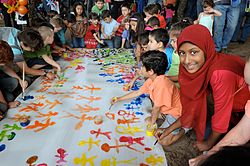 Managed by the Department of Immigration and Citizenship (DIAC), Harmony Day is intended to celebrate the cohesive and inclusive nature of Australia and promote a tolerant and culturally diverse society.
Managed by the Department of Immigration and Citizenship (DIAC), Harmony Day is intended to celebrate the cohesive and inclusive nature of Australia and promote a tolerant and culturally diverse society.
Emigration and immigration are sometimes mandatory in a contract of employment: religious missionaries, and employees of transnational corporations, international non-governmental organizations and the diplomatic service expect, by definition, to work ‘overseas.’They are often referred to as ‘expatriates’, and their conditions of employment are typically equal to or better than those applying in the host country (for similar work).
For some migrants, education is the primary pull factor (although most international students are not classified as immigrants). Retirement migration from rich countries to lower-cost countries with better climate is a new type of international migration. Examples include immigration of retired British citizens to Spain or Italy and of retired Canadian citizens to the U.S. (mainly to the U.S. states of Florida and Texas).
Non-economic push factors include persecution (religious and otherwise), frequent abuse, bullying, oppression, ethnic cleansing and even genocide, and risks to civilians during war. Political motives traditionally motivate refugee flows—to escape dictatorship for instance.
Some migration is for personal reasons, based on a relationship (e.g. to be with family or a partner), such as in family reunification or transnational marriage (especially in the instance of a gender imbalance). Recent research has found gender, age, and cross-cultural differences in the ownership of the idea to immigrate (for more, click here). In a few cases, an individual may wish to immigrate to a new country in a form of transferred patriotism. Evasion of criminal justice (e.g. avoiding arrest) is a personal motivation. This type of emigration and immigration is not normally legal, if a crime is internationally recognized, although criminals may disguise their identities or find other loopholes to evade detection. There have been cases, for example, of those who might be guilty of war crimes disguising themselves as victims of war or conflict and then pursuing asylum in a different country.
Barriers to immigration come not only in legal form or political form; natural and social barriers to immigration can also be very powerful. Immigrants when leaving their country also leave everything familiar: their family, friends, support network, and culture. They also need to liquidate their assets often at a large loss, and incur the expense of moving. When they arrive in a new country this is often with many uncertainties including finding work, where to live, new laws, new cultural norms, language or accent issues, possible racism and other exclusionary behavior towards them and their family. These barriers act to limit international migration (scenarios where populations move en masse to other continents, creating huge population surges, and their associated strain on infrastructure and services, ignore these inherent limits on migration).
 The Iron Curtain in Europe was designed as a means of preventing emigration. “It is one of the ironies of post-war European history that, once the freedom to travel for Europeans living under communist regimes, which had long been demanded by the West, was finally granted in 1989/90, travel was very soon afterwards made much more difficult by the West itself, and new barriers were erected to replace the Iron Curtain.” —Anita Böcker
The Iron Curtain in Europe was designed as a means of preventing emigration. “It is one of the ironies of post-war European history that, once the freedom to travel for Europeans living under communist regimes, which had long been demanded by the West, was finally granted in 1989/90, travel was very soon afterwards made much more difficult by the West itself, and new barriers were erected to replace the Iron Curtain.” —Anita Böcker
The politics of immigration have become increasingly associated with other issues, such as national security, terrorism, and in western Europe especially, with the presence of Islam as a new major religion. Those with security concerns cite the 2005 civil unrest in France that point to the Jyllands-Posten Muhammad cartoons controversy as an example of the value conflicts arising from immigration of Muslims in Western Europe. Because of all these associations, immigration has become an emotional political issue in many European nations.
Studies have suggested that some special interest groups lobby for less immigration for their own group and more immigration for other groups since they see effects of immigration, such as increased labor competition, as detrimental when affecting their own group but beneficial when impacting other groups. A 2010 European study suggested that “that employers are more likely to be pro-immigration than employees, provided that immigrants are thought to compete with employees who are already in the country. Or else, when immigrants are thought to compete with employers rather than employees, employers are more likely to be anti-immigration than employees.” A 2011 study examining the voting of US representatives on migration policy suggests that “that representatives from more skilled labor abundant districts are more likely to support an open immigration policy towards the unskilled, whereas the opposite is true for representatives from more unskilled labor abundant districts.”
Another contributing factor may be lobbying by earlier immigrants. The Chairman for the US Irish Lobby for Immigration Reform which lobby for more permissive rules for immigrants, as well as special arrangements just for Irish, has stated that “the Irish Lobby will push for any special arrangement it can get — ‘as will every other ethnic group in the country.’
Region-specific factors for Immigration
As a principle, citizens of one member nation of the European Union are allowed to work in other member nations with little to no restriction on movement. This is aided by the EURES network which brings together the European Commission and the public employment services of the countries belonging to the European Economic Area and Switzerland. For non-EU-citizen permanent residents in the EU, movement between EU-member states is considerably more difficult. After 155 new waves of accession to the European Union, earlier members have often introduced measures to restrict participation in “their” labour markets by citizens of the new EU-member states. For instance, Austria, Belgium, Denmark, France, Germany, Greece, Italy, Luxembourg, Netherlands, Portugal and Spain each restricted their labor market for up to seven years both in the 2004 and 2007 round of accession.
Immigration in Today’s World
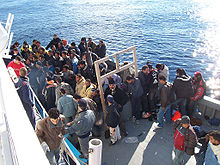 North African Immigrants near the Italian Island of Sicily
North African Immigrants near the Italian Island of Sicily
Due to the European Union’s—in principle—single internal labour market policy, countries such as Italy and the Republic of Ireland that have seen relatively low levels of labour immigration until recently (and which have often sent a significant portion of their population overseas in the past) are now seeing an influx of immigrants from EU countries with lower per capita annual earning rates, triggering nationwide immigration debates. Spain, meanwhile, is seeing growing illegal immigration from Africa. As Spain is the closest EU member nation to Africa—Spain even has two autonomous cities (Ceuta and Melilla) on the African continent, as well as an autonomous community (the Canary Islands) west of North Africa, in the Atlantic—it is physically easiest for African emigrants to reach. This has led to debate both within Spain and between Spain and other EU members. Spain has asked for border control assistance from other EU states; the latter have responded that Spain has brought the wave of African illegal migrants on itself by granting amnesty to hundreds of thousands of undocumented foreigners.
The United Kingdom, France and Germany have seen major immigration since the end of World War II and have been debating the issue for decades. Foreign workers were brought in to those countries to help rebuild after the war, and many stayed. Political debates about immigration typically focus on statistics, the immigration law and policy, and the implementation of existing restrictions. In some European countries the debate in the 1990’s was focused on asylum seekers, but restrictive policies within the European Union, as well as a reduction in armed conflict in Europe and neighboring regions, have sharply reduced asylum seekers.
Some states, such as Japan, have opted for technological changes to increase profitability (for example, greater automation), and designed immigration laws specifically to prevent immigrants from coming to, and remaining within, the country. Globalization, as well as low birth rates and an aging work force, has forced Japan to reconsider its immigration policy. Japan’s colonial past has also created considerable number of non-Japanese in Japan. Japan keeps tight control on immigration and in 2009, despite generous overseas aid for refugees, granted political asylum to just 30 people. Japanese Minister Taro Aso described Japan as unique in being “one nation, one civilisation, one language, one culture and one race.”
In the United States political debate on immigration has flared repeatedly since the US became independent.[citation needed] Some on the far-left of the political spectrum attribute anti-immigration rhetoric to an all-“white”, under-educated and parochial minority of the population, ill-educated about the relative advantages of immigration for the US economy and society. While those on the far-right think that immigration threatens national identity, as well as cheapening labor and increasing dependence on welfare.
Economic Migrant
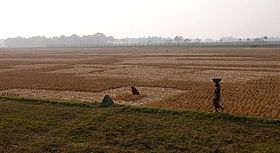 The Indo-Bangladeshi barrier in 2007. India is building a separation barrier along the 4,000 kilometer border with Bangladesh to prevent illegal immigration.
The Indo-Bangladeshi barrier in 2007. India is building a separation barrier along the 4,000 kilometer border with Bangladesh to prevent illegal immigration.
The term economic migrant refers to someone who has emigrated from one region to another region for the purposes of seeking employment or improved financial position. An economic migrant is distinct from someone who is a refugee fleeing persecution.
Many countries have immigration and visa restrictions that prohibit a person entering the country for the purposes of gaining work without a valid work visa. Persons who are declared an economic migrant can be refused entry into a country.
The process of allowing immigrants into a particular country has been believed to have effects on wages and employment. Particularly the lower skilled workers are affected directly, but evidence suggests that this is due to adjustments within industries.
The World Bank estimates that remittances totaled $420 billion in 2009, of which $317 billion went to developing countries.
Ethics
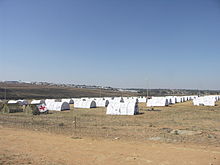 UNHCR tents at a refugee camp following episodes of anti-immigrant violence in South Africa, 2008
UNHCR tents at a refugee camp following episodes of anti-immigrant violence in South Africa, 2008
Treatment of migrants in host countries, both by governments, employers, and original population, is a topic of continual debate and criticism, as many cases of abuse and violation of rights are being reported frequently. Some countries have developed a particularly notorious reputation regarding treatment of migrants. The United Nations Convention on the Protection of the Rights of All Migrant Workers and Members of Their Families, has been ratified but by 20 states, all of which are heavy exporters of cheap labor. With the sole exception of Serbia, none of the signatories are western countries, but all are from Asia, South America, and North Africa. Arab states of the Persian Gulf, which are known for receiving millions of migrant workers, have not signed the treaty as well. Although freedom of movement is often recognized as a civil right in many documents such as the Universal Declaration of Human Rights (1948) and the International Covenant on Civil and Political Rights (1966), the freedom only applies to movement within national borders: it may be guaranteed by the constitution or by human rights legislation. Additionally, this freedom is often limited to citizens and excludes others.
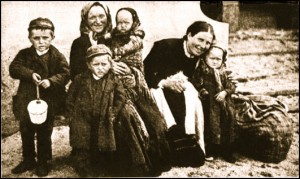 No sovereign state currently allows full freedom of movement across its borders, except Uruguay, and international human rights treaties do not confer a general right to enter another state.[citation needed] Proponents of immigration maintain that, according to Article 13 of the Universal Declaration of Human Rights, everyone has the right to leave or enter a country, along with movement within it (internal migration), although article 13 actually restricts freedom of movement to “within the borders of each state.” Additionally, the UDHR does not mention entry into other countries when it states that “everyone has the right to leave any country, including his own, and to return to his country.” Some argue that the freedom of movement both within and between countries is a basic human right, and that the restrictive immigration policies, typical of nation-states, violate this human right of freedom of movement. Such arguments are common among anti-state ideologies like anarchism and libertarianism. As philosopher and “Open Borders” activist Jacob Appel has written, “Treating human beings differently, simply because they were born on the opposite side of a national boundary, is hard to justify under any mainstream philosophical, religious or ethical theory.” However, Article 14 does provide that “everyone has the right to seek and to enjoy in other countries asylum from persecution.”
No sovereign state currently allows full freedom of movement across its borders, except Uruguay, and international human rights treaties do not confer a general right to enter another state.[citation needed] Proponents of immigration maintain that, according to Article 13 of the Universal Declaration of Human Rights, everyone has the right to leave or enter a country, along with movement within it (internal migration), although article 13 actually restricts freedom of movement to “within the borders of each state.” Additionally, the UDHR does not mention entry into other countries when it states that “everyone has the right to leave any country, including his own, and to return to his country.” Some argue that the freedom of movement both within and between countries is a basic human right, and that the restrictive immigration policies, typical of nation-states, violate this human right of freedom of movement. Such arguments are common among anti-state ideologies like anarchism and libertarianism. As philosopher and “Open Borders” activist Jacob Appel has written, “Treating human beings differently, simply because they were born on the opposite side of a national boundary, is hard to justify under any mainstream philosophical, religious or ethical theory.” However, Article 14 does provide that “everyone has the right to seek and to enjoy in other countries asylum from persecution.”
 Where immigration is permitted, it is typically selective. Family reunification accounts for approximately two-thirds of legal immigration to the US every year. Ethnic selection, such as the White Australia policy, has generally disappeared, but priority is usually given to the educated, skilled, and wealthy. Less privileged individuals, including the mass of poor people in low-income countries, cannot avail themselves of the legal and protected immigration opportunities offered by wealthy states. This inequality has also been criticized as conflicting with the principle of equal opportunities, which apply (at least in theory) within democratic nation-states. The fact that the door is closed for the unskilled, while at the same time many developed countries have a huge demand for unskilled labor, is a major factor in illegal immigration. The contradictory nature of this policy—which specifically disadvantages the unskilled immigrants while exploiting their labor—has also been criticized on ethical grounds.
Where immigration is permitted, it is typically selective. Family reunification accounts for approximately two-thirds of legal immigration to the US every year. Ethnic selection, such as the White Australia policy, has generally disappeared, but priority is usually given to the educated, skilled, and wealthy. Less privileged individuals, including the mass of poor people in low-income countries, cannot avail themselves of the legal and protected immigration opportunities offered by wealthy states. This inequality has also been criticized as conflicting with the principle of equal opportunities, which apply (at least in theory) within democratic nation-states. The fact that the door is closed for the unskilled, while at the same time many developed countries have a huge demand for unskilled labor, is a major factor in illegal immigration. The contradictory nature of this policy—which specifically disadvantages the unskilled immigrants while exploiting their labor—has also been criticized on ethical grounds.
Immigration policies which selectively grant freedom of movement to targeted individuals are intended to produce a net economic gain for the host country. They can also mean net loss for a poor donor country through the loss of the educated minority—the brain drain. This can exacerbate the global inequality in standards of living that provided the motivation for the individual to migrate in the first place. One example of competition for skilled labour is active recruitment of health workers from the Third World by First World countries.
Immigration and Western Social Values
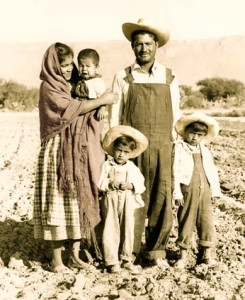 Many commentators have raised the issue that immigrants from certain cultures who move into Western countries may not be able to understand and assimilate certain Western concepts, that are relatively alien in some parts of the world, especially related to women’s rights, domestic violence, LGBT rights and the supremacy of secular laws in front of religious practices. For instance, in many parts of the world it is legal and socially accepted for men to use physical violence against their wives if they “misbehave”; and wives are expected, both legally and socially, to “obey” their husbands. Various behaviors of women, such as refusing arranged marriages or having premarital sex, are seen in many parts of the world as justifying violence from family members (parents). A 2010 survey conducted by the Pew Research Center found that stoning as a punishment for adultery was supported by 82% of respondents in Egypt and Pakistan, 70% in Jordan, 56% Nigeria, 42% in Indonesia; the death penalty for people who leave the Muslim religion was supported by 86% of respondents in Jordan, 84% in Egypt and 76% in Pakistan; gender segregation in the workplace was supported by 85% of respondents in Pakistan, 54% in Egypt, 50% in Jordan. Some people argue that Western countries have worked very hard and for a very long time to achieve modern values, and they have the right to maintain these values, and protect them from threats. In 2007, Quebec premier Jean Charest said that Quebec had values such as equality of women and men and the separation between the state and religion and that “These values are fundamental. They cannot be the object of any accommodation. They cannot be subordinated to any other principle.” (see reasonable accommodation). In recent years, several high profile cases of honor killings, forced marriages and female genital mutilation among immigrant communities in Canada, the US and Europe have reignited the debate on immigration and integration. LGBT rights are another issue of controversy in relation to immigration, because homosexuality is in many parts of the world illegal and widely disapproved by society, and in some places it is even punishable by death (see sodomy laws and LGBT rights by country or territory). Some countries, such as the Netherlands, have adopted policies which explain to immigrants that they have to accept LGBT rights if they want to move to the country.
Many commentators have raised the issue that immigrants from certain cultures who move into Western countries may not be able to understand and assimilate certain Western concepts, that are relatively alien in some parts of the world, especially related to women’s rights, domestic violence, LGBT rights and the supremacy of secular laws in front of religious practices. For instance, in many parts of the world it is legal and socially accepted for men to use physical violence against their wives if they “misbehave”; and wives are expected, both legally and socially, to “obey” their husbands. Various behaviors of women, such as refusing arranged marriages or having premarital sex, are seen in many parts of the world as justifying violence from family members (parents). A 2010 survey conducted by the Pew Research Center found that stoning as a punishment for adultery was supported by 82% of respondents in Egypt and Pakistan, 70% in Jordan, 56% Nigeria, 42% in Indonesia; the death penalty for people who leave the Muslim religion was supported by 86% of respondents in Jordan, 84% in Egypt and 76% in Pakistan; gender segregation in the workplace was supported by 85% of respondents in Pakistan, 54% in Egypt, 50% in Jordan. Some people argue that Western countries have worked very hard and for a very long time to achieve modern values, and they have the right to maintain these values, and protect them from threats. In 2007, Quebec premier Jean Charest said that Quebec had values such as equality of women and men and the separation between the state and religion and that “These values are fundamental. They cannot be the object of any accommodation. They cannot be subordinated to any other principle.” (see reasonable accommodation). In recent years, several high profile cases of honor killings, forced marriages and female genital mutilation among immigrant communities in Canada, the US and Europe have reignited the debate on immigration and integration. LGBT rights are another issue of controversy in relation to immigration, because homosexuality is in many parts of the world illegal and widely disapproved by society, and in some places it is even punishable by death (see sodomy laws and LGBT rights by country or territory). Some countries, such as the Netherlands, have adopted policies which explain to immigrants that they have to accept LGBT rights if they want to move to the country.

